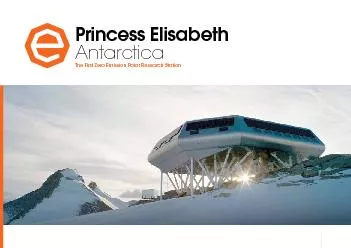PDF-Princess Elisabeth
Author : alida-meadow | Published Date : 2016-02-22
3 Smart 4 5 The International Polar Foundation was created in 2002 with the mission of connecting science and society through education action and demonstration By
Presentation Embed Code
Download Presentation
Download Presentation The PPT/PDF document "Princess Elisabeth" is the property of its rightful owner. Permission is granted to download and print the materials on this website for personal, non-commercial use only, and to display it on your personal computer provided you do not modify the materials and that you retain all copyright notices contained in the materials. By downloading content from our website, you accept the terms of this agreement.
Princess Elisabeth: Transcript
Download Rules Of Document
"Princess Elisabeth"The content belongs to its owner. You may download and print it for personal use, without modification, and keep all copyright notices. By downloading, you agree to these terms.
Related Documents














